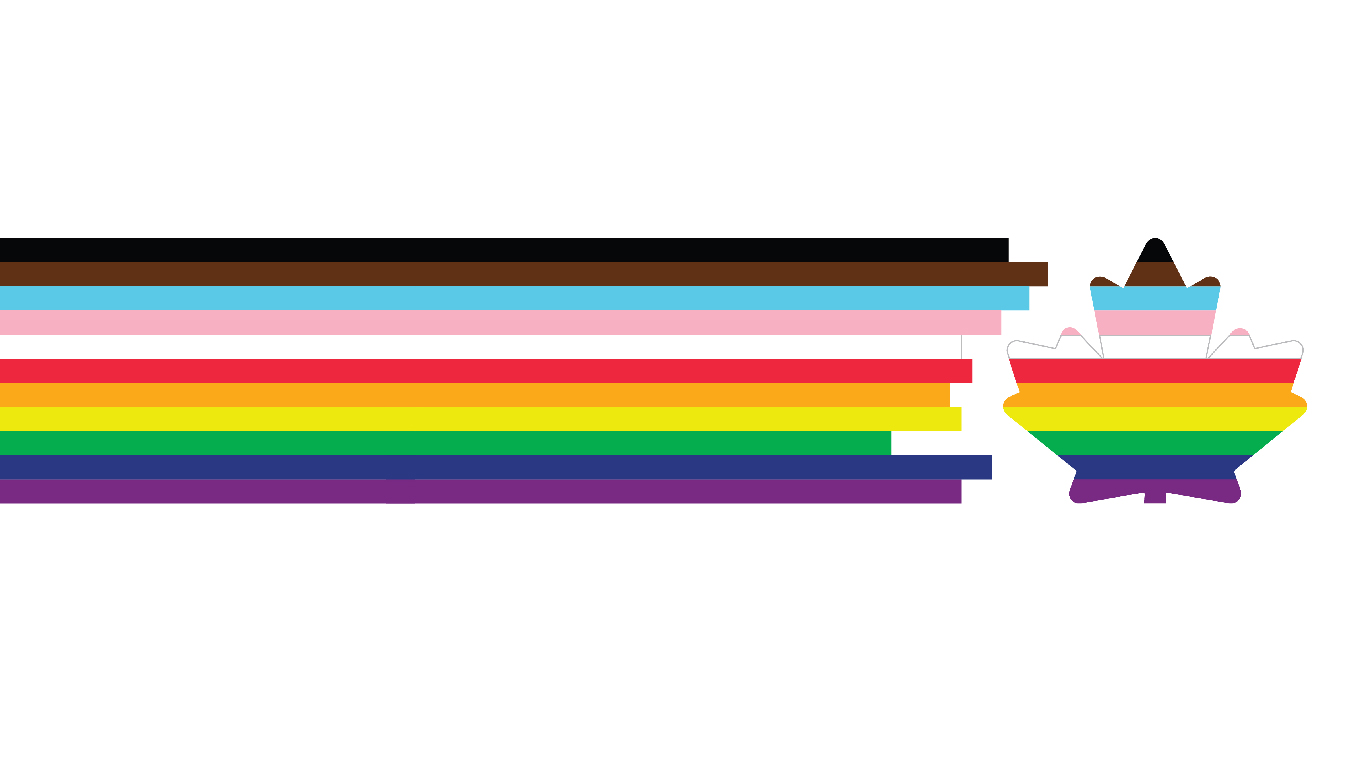
June to September is Pride Season in Canada, a time to celebrate 2SLGBTQI+ people (that is, people who are Two-Spirit, lesbian, gay, bisexual, transgender, queer, or intersex, or who use other terms related to sexual or gender diversity) and honour the contributions that they have made and continue to make.
During Pride, a wide range of parties, parades and other celebratory events take place across the country.
Historically, gatherings emerged from the first large-scale protests for 2SLGBTQI+ rights. In Canada, the first demonstrations took place in Ottawa and Vancouver in 1971. By 1973, Pride events were held in several major Canadian cities. Toronto’s Pride weekend in June is now among the largest Pride events in North America.
These days, Pride Season encompasses a wide range of Pride events:
- Pride Month, celebrated every June in many countries
- Public Service Pride Week, celebrated annually in the third week of August
- Pride events celebrated all summer long across Canada.
An estimated 1 million people in Canada are 2SLGBTQ+, representing 4% of the Canadian population aged 15 years and older.
The 2SLGBTQ+ population is relatively young
In 2018, youth aged 15 to 24 made up 30% of the 2SLGBTQ+ population, compared with 14% of the non-2SLGBTQ+ population.
Younger generations had larger shares of transgender or non-binary people. The proportions of transgender and non-binary people were three to seven times higher for Generation Z (0.79%) and millennials (0.51%) than for Generation X (0.19%), baby boomers (0.15%), and the Interwar Generation and the Greatest Generation (0.12%).
In May 2021, the Canadian population aged 15 and older had an average age of 48.0 years. In comparison, the transgender population had an average age of 39.4 years, while the non-binary population had an average age of 30.4 years.
Transgender men (34.9 years) were almost a decade younger on average than transgender women (43.3 years).
Close to two-thirds (62.0%) of the 100,815 individuals who were transgender or non-binary were younger than 35.
Gender diversity was highest among those aged 20 to 24, almost 1 in 100 (0.85%) of whom were transgender or non-binary. In comparison, 1 in 700 were transgender or non-binary among people aged 65 and older.
Nova Scotia (1.17%) and British Columbia (0.90%) had the largest proportions of transgender and non-binary people aged 15 to 34 among the provinces, while Quebec (0.52%) and Saskatchewan (0.59%) had the lowest proportions.
Educational attainment of lesbian, gay and bisexual people in Canada
From 2015 to 2018, among people aged 25 to 64, 78% of gay men, 76% of lesbian women, 69% of bisexual men and 68% of bisexual women held a postsecondary qualification, either at the university or college level or in a skilled trade.
In Canada, 43% of gay men, 38% of lesbian women, 36% of bisexual men and 34% of bisexual women held a bachelor’s degree or above.
In addition, 8% of gay men, 8% of lesbian women, 12% of bisexual men and 6% of bisexual women held a trades certificate or diploma as their highest level of education.
Happy Pride, Canada
During this month, we recognize the courage and resilience that 2SLGBTQI+ people across the country have shown over the years. This strong, vibrant and diverse population has contributed to every aspect of life in Canada, from business and politics to arts and culture, sports, science, and much more.
This Pride Season is an opportunity to take part in celebrations and activities in your region, and to honour the contributions of 2SLGBTQI+ people in all aspects of Canadian society. Visit the 2SLGBTQI+ Secretariat to learn more about Pride Season and Pride events happening across Canada.
The Gender, Diversity and Inclusion Statistics Hub, first launched in 2018, brings together Statistics Canada data related to gender, diversity and inclusion in Canada, as well as information on gender statistics in the international context. The hub enables users to more easily find disaggregated and intersectional data, analytical products and insights.
This Pride Season, show your support and get involved! Click here to see more ways to participate.
Note to readers: 2SLGBTQ+ acronym
Whereas the Government of Canada adopted and encourages the use of the acronym 2SLGBTQI+ to refer to Two-Spirit, lesbian, gay, bisexual, transgender, queer and intersex people and those who use other terms related to gender or sexual diversity, for the purposes of data analysis, the acronym 2SLGBTQ+ is used in this document, as information is not yet specifically collected about intersex people in Statistics Canada surveys.
Contact information
For more information, contact the Statistical Information Service (toll-free 1-800-263-1136; 514-283-8300; infostats@statcan.gc.ca) or Media Relations (statcan.mediahotline-ligneinfomedias.statcan@statcan.gc.ca).
